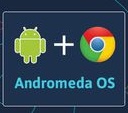We present a quantitative measurement of the amount of clustering present in the inner $\sim30$ kpc of the stellar halo of the Andromeda galaxy (M31). For this we analyse the angular positions and radial velocities of the carefully selected Planetary Nebulae (PNe) in the M31 stellar halo. We study the cumulative distribution of pair-wise distances in angular position and line of sight velocity space, and find that the M31 stellar halo contains substantially more stars in the form of close pairs as compared to that of a featureless smooth halo. In comparison to a smoothed/scrambled distribution we estimate that the clustering excess in the M31 inner halo is roughly $40\%$ at maximum and on average $\sim 20\%$. Importantly, comparing against the 11 stellar halo models of \cite{2005ApJ...635..931B}, which were simulated within the context of the $\Lambda{\rm CDM}$ cosmological paradigm, we find that the amount of substructures in the M31 stellar halo closely resembles that of a typical $\Lambda{\rm CDM}$ halo.
翻译:我们展示了安卓美达星系(M31)星际光环内部30美元Kpc 的组合量的定量测量。 为此,我们分析了M31星际光圈中精心选择的星云星云(Pne)的角位置和射线速度。我们研究了在角位置和视速空间线上双向距离的累积分布,发现M31星际光圈中以近对形式所含的恒星数量大大多于光滑的光宽光环。与光滑的分布相比,我们估计M31星际光圈中超载的阵形位置和射线速度最多和平均约为40美元20美元。我们比较了11个星际光圈模型(cite{2005ApJ...635.931B},这些模型是在美元/Lamda_rmrm CDM}的范围内模拟的。与光滑/cramble分布模型相比,我们估计M31 内光环光球中超值大约40美元,平均为20美元。 重要的是,我们发现在M31号空间模型中具有典型的亚结构。




